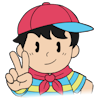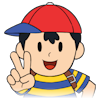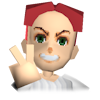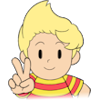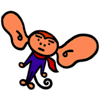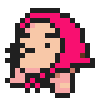History of MOTHER 3 N64
by: Snowwood on 2/4/2023
The text and information from the Prerelease:MOTHER 3 and the Prerelase:MOTHER3/Early_N64_Development pages from The Cutting Room Floor was copied to make this page.
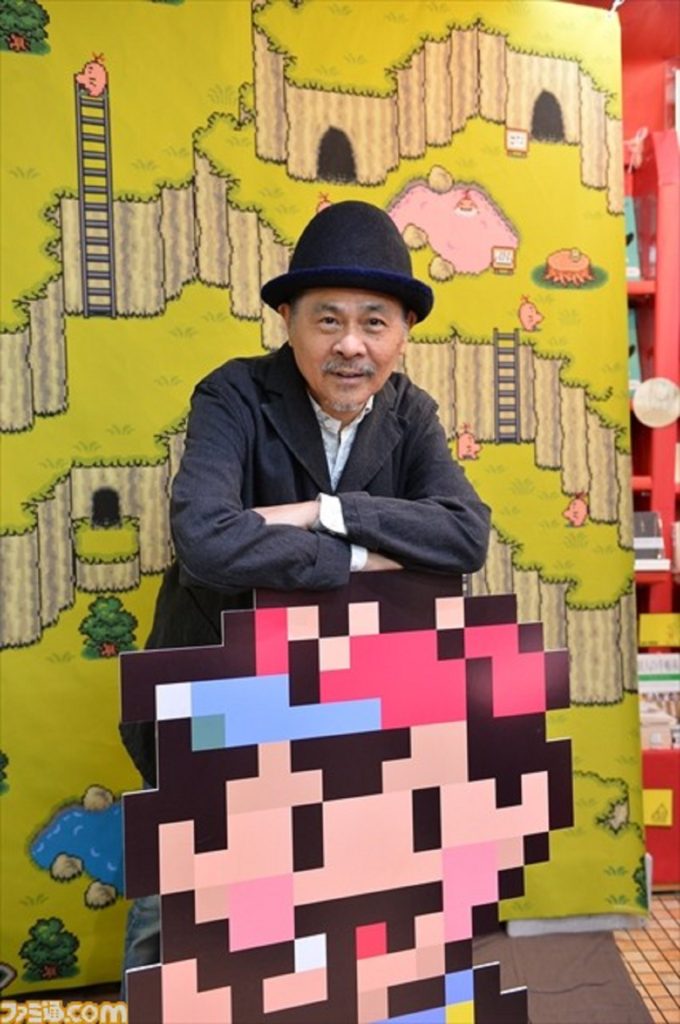
Even after the long and brutal development cycle that MOTHER 2 endured, Shigesato Itoi still decided that it was time for a new entry. Even before MOTHER 2 was released in Japan, concepts for MOTHER 3 were created. Within the game, there existed a post sign in a town called Fourside that alleged that MOTHER 3 was “under planning,” and the game’s final scene suggested that the story would continue.
Regarding the original concept for MOTHER 3:
“…That’s when I thought of an RPG in which you stay in a certain town for a long time. You’d be a detective who would get hired to follow someone’s wife to see if she’s having an affair, or you’d be asked to catch a shoplifter. You’d do things like that while living in the second floor of a run-down supermarket. That’s about the level of detail I’d come up with already. Information would change every day while you wandered around, and you would solve small cases based on that information. As you’d repeat this, you’d get caught up in a large incident. Once you got the information to solving the big incident, you’d be able to go to the next town and work there. You wouldn’t get stronger by beating stronger and stronger enemies; the things you could do would increase as you went around the same place over and over. The game would have character relations, and the people would all have their own lives. This way, we could do all sorts of things in the game. For example, someone who recently hung laundry out to dry would be wearing those clothes the next day. I wanted to make an RPG in which you could grow closer to the people as time went on. Actually, MOTHER 3 took shape shortly after, and in the game, you’re in a village called Tazmily for a long time. That came from this idea. I had hoped to include other things that didn’t adhere to the “road movie” pattern. I really wanted to do a lot more of that sort of thing.” – Shigesato Itoi (Animal Crossing Discussion, April 2009)
“First of all, MOTHER 2 and MOTHER 3 both started out as completely different games. When we were making MOTHER 2, I wanted to make a completely different game at first. That’s what MOTHER 3 is based on. To put it simply, it was a hard-boiled detective story…for example, he ran away from his wife. The main character was a detective who investigates marital affairs while taking care of his child. I thought up a story about a detective who does that kind of thing. I thought of a story about a detective who investigates affairs while taking care of his children…that’s why MOTHER 3 was not created with a specific theme in mind. It was the world that came first. I wanted to throw all kinds of people into that world and have fun with them. So, at the very beginning, there was no connection to MOTHER 2 at all. I just thought, “It would be fun to have a world like this!” But as I was making it…I knew family was important.. That’s how I ended up with this story about family.” – Shigesato Itoi (Lize Helesta interview, October 31st 2020)
According to Shigesato Itoi, the Super Famicom version of MOTHER 3 was scrapped “halfway through.” According to Starmen.net co-founder Reid Young, the SFC version was planned to have a pre-rendered art style in the vein of Donkey Kong Country. Itoi has gone on record saying he admires the art style of Donkey Kong 64 for another N64 project he was working on, Cabbage, but this claim was never substantiated for MOTHER 3.
MOTHER 3 was first mentioned on June 19th, 1992, in an interview with Weekly Famitsu.
Weekly Famitsu Representative: “So what’s this about a CD-ROM?”
Itoi: “Ah, yeah, we’re going to do one. It’s decided. We’ve been thinking about it alongside this game. We’ve also decided what kind of game we’re going to make. Whether it’s going to be MOTHER 3, I’m not sure, but it’s going to be awesome. I thought of it in the middle of the night—it was enough to make me rush and call my friend about it. Plus there’s sort of a hint to it in MOTHER 2. I can’t name any specifics because it’s about the next game, but we’re doing a CD-ROM. For the Super Famicom.”
Weekly Famitsu Representative: “So it’s an RPG, right?”
Itoi: “Well, even with MOTHER 2, I feel like it isn’t really in the RPG category. Like, making an RPG out of a game and making it out of a story are two different things. RPGs often refer to games in which one plays the part of the character, but even more than role-playing it usually seems like a simulation game. I don’t know if there’s any other way of putting it. Hmm, but you know, the CD-ROM game after MOTHER 2 is gonna be a good one. Won’t do much good if I just go around barking, ‘It’s so good!’ though [laughs].”
Weekly Famitsu Representative: “And when will that be?”
Itoi: “Well, it’s going to be a while! After all, MOTHER 2 has taken about three years already. I feel really bad about that, but I have been preoccupied with my regular work [laughs].”
Development Timeline
1989-1995
- Late 1989: During the initial concepts for MOTHER 2, Shigesato Itoi develops the idea for what would become the basis for MOTHER 3. He conceptualizes the idea of a game that follows a detective investigating marital affairs between two towns, while being a single father of one son. Although this idea was scrapped, it would return as the foundation for what would become MOTHER 3.
- Early 1992: Itoi calls up Satoru Iwata, producer of MOTHER 2, in the middle of the night about his idea for MOTHER 3. He told Iwata about his concept of one town that changes over time, as opposed to the typical “road trip” structure of most RPGs. Iwata liked his idea, but encouraged they finish MOTHER 2 first.
- June 19, 1992: MOTHER 3 is officially hinted at in Weekly Famitsu. Itoi says he isn’t sure if the title will be called “MOTHER 3“, but states it will be a CD-ROM title.
- June 1994: Development of MOTHER 3 officially commences upon the completion of MOTHER 2, with the same team as the previous game, on the Super Famicom.
- Late 1994: An interview with Itoi says MOTHER 3 would see store shelves as a “next-generation product” within two years, as the Super Famicom CD addon was canceled.
- November 1995: The Nintendo 64DD is announced.
1996
- July: Iwata officially announces in Dengeki Nintendo 64 that MOTHER 3 will be a launch title for the Nintendo 64DD. He reveals the game would defy players’ expectations, and the idea of multiple protagonists. Porky was also stated to have an important role in the game.
- November 12: A new hire at HAL, Shogo Sakai, pitches a demo tape to the MOTHER 3 team. He proposes the idea of having a “fresh” sound to the game, and the team hired him on the spot having loved his music.
- November 22: MOTHER 3 is unveiled for the first time at Shoshinkai. Footage features a limping blonde character named Duster walking through a nightclub called Titiboo to see the band, DCMC. Additionally, many scenes of a village called Tazmily are shown, along with a young brunette child named Lucas wandering a jungle along with another unnamed character who bears a striking resemblance to Ninten and Ness.
- November: Itoi reveals more details about MOTHER 3 in 64 Dream. He states the supporting scripts, maps, and characters had been completed and their next step was bringing the game to life. While he was vague about specific details, Itoi revealed that all the characters were indeed new and not returning (retroactively revealing the Ness-lookalike to be a new character). On the other hand, he did announce that both Mr. Saturn and Porky would be returning for Mother 3.
- November: Many details about the game are revealed in magazines like 64 Dream, Weekly Famitsu, and Dengeki 64. Characters include Lucas, a young boy who likes to pick mushrooms in the forest; Salsa, a mysterious peddler’s pet monkey; and Duster, a young man with a master named Wess who sleeps all day and enjoys a nice nighttime walk with a cocktail. Tazmily Village is also detailed to be the main town, with the Pig Warrior army being revealed as the main antagonists. It is also offhandedly mentioned that Lucas has a brother.
1997
- January: Mother 3: キマイラの森 (Mother 3: Forest of the Chimera) is covered in Weekly Famitsu, with the subtitle being revealed for the first time. The first new screenshots are shown since Shoshinkai, which include Lucas, Duster, and Salsa exploring a vast forest with sky beams; the Pig Warrior Army gathered in a hall; and an unknown character exploring a snowy trail. It was here that Itoi stated the Pig Warrior Army was composed of ranks, with the red-clothed Lieutenant being the highest ranking. Iwata accidentally revealed the existence of the chapter system in one interview with Weekly Famitsu, relieving Itoi, “Ahh you finally said it. Now I can relax. I’ve been holding that in this whole time!”
- April: In an interview with 64 Dream, Itoi spoke more about his ideas in creating Mother 3. He did not envision Tazmily as “the first town”, but rather a field for the player to explore. The total number of playable characters is said to be 8, with Lucas and Duster having prominent appearances. He also experimented with the idea of Mr. Saturn being a playable character, but the team objected against this. Lastly, speaking on the theme of Mother 3, Itoi said there is no central theme in mind, but rather to encourage the player to “play intensely”.
- June 19-21: The game’s art director, Benimaru Itoh, does a couple of interviews regarding the game at E3. Many asked him questions about the game. Itoh told them about how the 64DD will enhance the game, “…not only are the rooms cluttered just as the player left them, but the 64DD allows for all kinds of fun tricks. If you can imagine it, the player can even create their own landmarks on-screen. I’m wondering if this’ll make it hard for second hand stores to sell the game.” He talks about how Itoi hated his original design for Lucas for looking too similar to himself, and requested something more straightforward. He describes Lucas as a boy who “loves flowers and small birds,” and says MOTHER 3 will feature a dynamic world with over 250 characters. Many 64DD features are talked about, including Lucas being able to grow a garden in real time by planting seeds, and attracting monsters by placing food down. The game was said to feature not only Mr. Saturns, but a race of new creatures that “will make you cry” inspired by Itoi’s doodles. Porky is also said to not only return, but have “grown older” in this era he hastily escaped to. Lastly, Itoh says “EarthBound 64” was chosen as the North American name as it was easy for overseas fans to recognize.
- June 26: In Weekly Famitsu, Lucas’ redesign is revealed, going from a brunette child in a poncho to a blonde child with a fanny pack. Flint, Lucas’ father is also revealed to be a main character in the game alongside images of them walking in the forest. The “metal-and-wood” logo is also shown for the first time, being inspired by the game’s focus on chimeras. Itoi also reveals the game will be 12 chapters long.
- August: The MOTHER 3 Times articles are launched in Dengeki Nintendo 64. The first one goes in depth about the DCMC – nonchalantly showcasing Duster’s redesign, who now looks more simplified and sports a beret.
- September: The game’s development staff are introduced in the MOTHER 3 Times. With Atsushi Kakuta directing the game, Masayuki Miura providing script editing, Akihiko Miura leading CG design as well as several others. “Bon Voyage Amigo” is also said to be the DCMC’s new hit single.
- Summer: Itoi completes writing the ending for the game upon a boat trip to Saipan.
- October: In this month’s MOTHER 3 Times, the game is announced to be playable at Spaceworld (rebranded from Shoshinkai). A contest at the venue is also announced, where Mother fans could send in photos of their collections in order to get their face put in the game through Mario Artist.
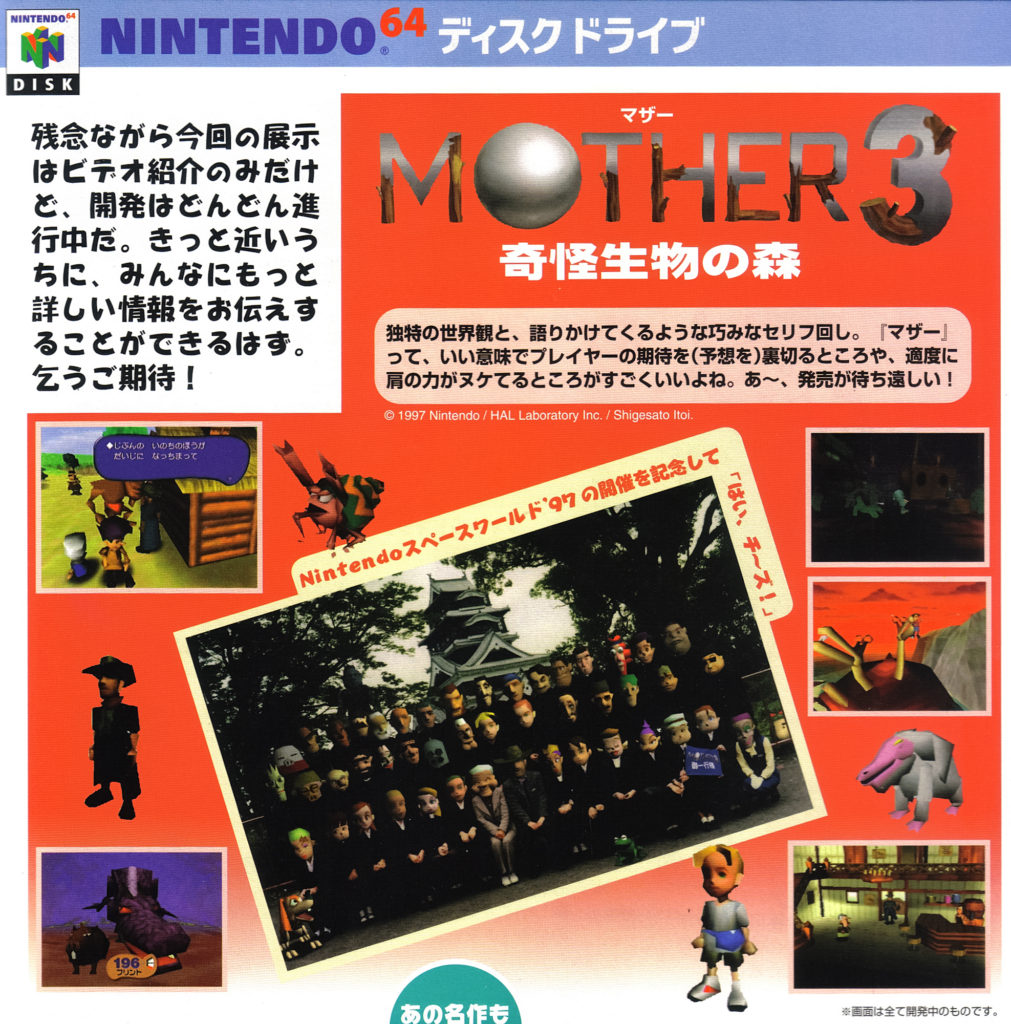
- November 21: Mother 3 is shown on video at Spaceworld, with the playable demo having been pulled at the last minute. An apology was issued in the event booklet, “While it is unfortunate, this time the exhibition was only a video introduction, but development is progressing. We will surely be able to give everyone more detailed information in the near future. Stay tuned!” The game is given a new subtitle, 奇怪生物の森 (Forest of Strange Creatures), because someone held a copyright on the world “chimera.” The contest that was announced in Dengeki Nintendo 64 is also held, with 12-year-old Hiroki Mukodani being the winner. Footage of him running around in the game was shown, along with other new footage which included Flint walking around Tazmily and talking to villagers, a Kraken emerging from a large brown substance, battles against the Pig Warriors and some capybaras using “Magic” and combos, as well as Lucas infiltrating the “Clayman” Factory.
- December 19: The MOTHER 3 Times covers all that was shown at Spaceworld. Claus is finally officially revealed, being Lucas’ brother who’s “energetic” and into “high-tech stuff”. An interview with Shogo Sakai (composer) and Takuto Kitsuta (sound programmer) is published. Sakai details his fresh approach to composing the music, having wanted to surprise Mother fans. He praised Kitsuta’s faithfulness in adapting his music to the N64, and gave him free reign to handle all techno or “mech”-sounding music.
1998
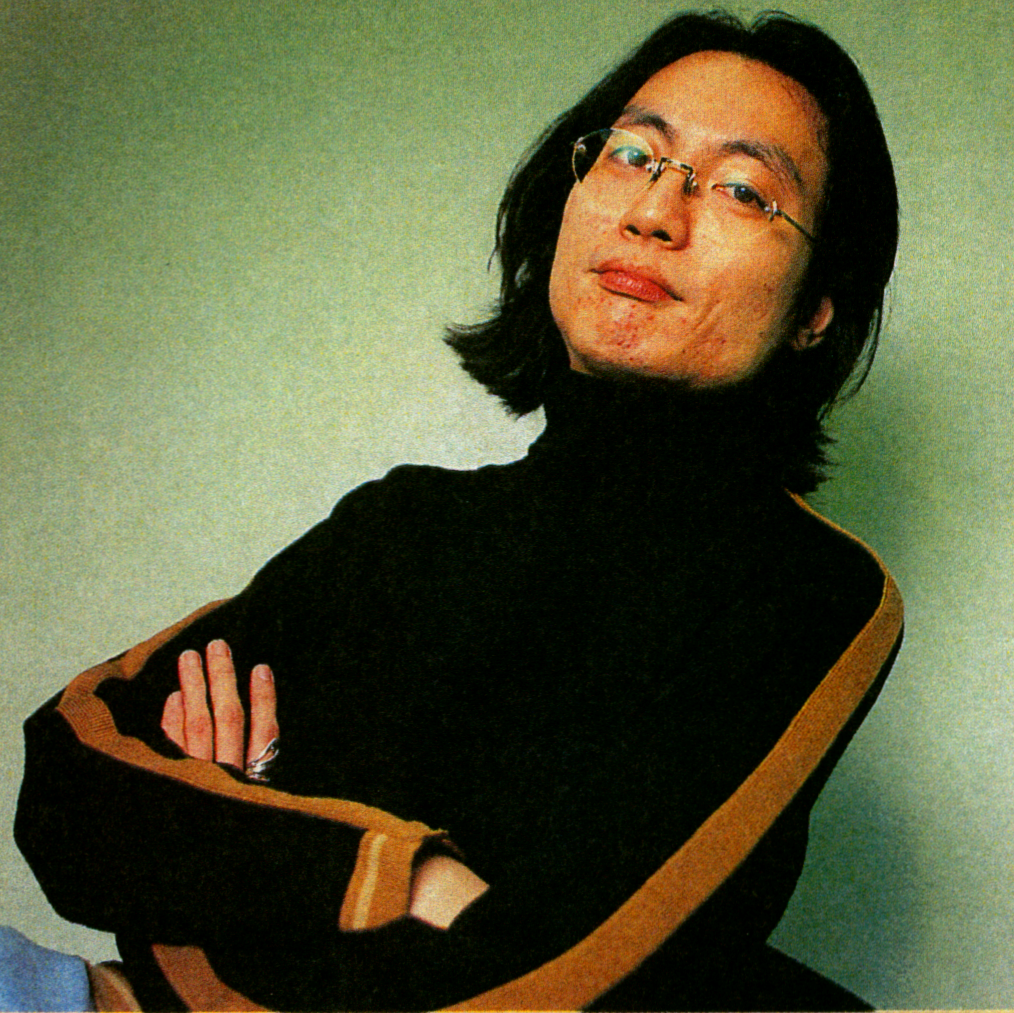
- January: An interview with the game’s programmer, Akihiko Miura, was published in the MOTHER 3 Times, where he details his studies of mathematics in order to properly bring the game to life. Great Scale Village is also revealed to be another location in the game, where a large sea creature (the Kraken) is said to be disturbing the waters, resulting in the death of Lighter’s wife Tobacco.
- February: An interview with the game’s script editor, Masayuki Miura, is published in the MOTHER 3 Times. He details his approach in working with Itoi, which he did previously in Mother 2. Lucas and Claus are also officially stated to be twins, with Hinawa being their loving mother.
- March: The MOTHER 3 Times interviews Tazmily’s mayor, P.K. Pirkle, about his pride in making life in the village happy for everybody. The staff also showcases MOTHER 3 fanart in the magazine.
- April: P.K. Pirkle is again interviewed in the MOTHER 3 Times, this time about a mysterious “carefree guy” who suddenly showed up in the village. This character bears a strong resemblance to the enemy hippies in MOTHER and MOTHER 2.
- May: A mysterious purple Drago lookalike is examined in the MOTHER 3 Times, having saved two lost children named Richie and Nichol in the Sunshine Forest.
- May 27: MOTHER 3 is shown on video at E3 1998 on an upcoming games sizzle reel. All of the footage is recycled from Spaceworld 1997.
- June: Great Scale Village is again showcased in the MOTHER 3 Times, with a pile of feces from the Kraken washing ashore.
- Summer – The game is officially moved to N64 cartridge format.
- July: Some more villagers are interviewed in the MOTHER 3 Times, about vicious flying rats that have suddenly appeared in Tazmily, having bitten some people’s heads.
- August: A mysterious fortune teller named Ionia is interviewed in the MOTHER 3 Times, revealing the game’s “Magic” system possibly being a science known as “PSI”, which appeared in Mother and Mother 2.
- September: The annual Tazmily Breeder’s Cup is detailed in the MOTHER 3 Times, with a 15-year-old boy named Butch having won due to his marvelous pigs.
- October: The game’s currency is revealed to be large acorns in this MOTHER 3 Times issue, which the general store keeper named Thomas admires for their smooth texture. We also learn the people of Tazmily like to wear pig noses in the Fall season.
- November: A strange winged bug creature is shown in the MOTHER 3 Times, who is described as ferocious and likes to fly in people’s faces. It is also said the DCMC are experiencing a fallout.
- December: A villager named Isaac discovers a searing crop circle in the Sunshine Forest in this issue of the MOTHER 3 Times. Apparently, he was picking mushrooms and noticed some strangely-dressed people just before he saw the circle. The DCMC situation is also dived deeper into, with the band hoping to find a new member to play the bass.
1999
- January: The MOTHER 3 Times talks about the people of Tazmily creating a square wheel. A recipe for “Kraken Soup” is also detailed.
- February: The Syd family is shown in the MOTHER 3 Times, with Ed’s newborn son Alle blessing the household. It is also here that the Save Frog is officially revealed. The weather forecast in Tazmily says it will rain sardines.
- March: In the MOTHER 3 Times, we learn about how Butch’s grandmother Bar likes to knit wool sweaters for the villagers come Wintertime. The disappearance of a villager named Nana’s father is also reported, who went missing at sea one year ago.
- April: The Sunset Cemetery is shown off for the first time in the MOTHER 3 Times, with rumors circulating that the dead have been rising during its renovation. The villagers also speculate about what’s underneath Flint’s signature hat, with the MOTHER 3 Times editors encouraging fans to send in their theories.
- May: Boney is featured in the MOTHER 3 Times as Claus’ one-year-old pup, who the villagers love to call “Benjamin”. A location in Tazmily called Toilette Falls is also revealed, which is a romantic waterfall several kilometers east of Tazmily.
- May: The scenario of MOTHER 3 is finished all the way to the end, with development of the Spaceworld demo beginning as the main game is put on hold. A new supervisor joins the team to help speed along development.
- June: Butch and another villager attempt to differentiate Lucas and Claus in the MOTHER 3 Times. Another location called Osohe Castle is also revealed, which is an abandoned kingdom now used as a vegetation field by the villagers. It is hinted that a Princess once lived at the castle.
- July 27: On the 10th Anniversary of the series, Itoi anonymously posts on a fan message board that MOTHER 3 would be playable at the upcoming Spaceworld.
- August 1999: The final volume of the MOTHER 3 Times is published, which introduces the Bell Ringer and the Bell of Repose, which rings in Tazmily everyday at 2 hour intervals. The 10th Anniversary of the series is also celebrated.
- August 21: A 50% complete version of MOTHER 3 is playable at Spaceworld, with the final subtitle, 豚王の最期 (Fall of the Pig King). The demo features both a playable Flint and Lucas roaming around Tazmily Square, underground Snake Caverns, and the searing yellow desert. The battle system features rhythm combos to the beat of the music, as well as a character swapping mechanic by performing high-fives on the overworld or flicking the analog stick in battle. Several cutscenes are also shown, featuring treacherous minecart rides with the twins, the DCMC rockin’ out, and Flint sending Boney off to fetch Duster in the rain. The Pig Warriors are also renamed the Pigmasks here as well.
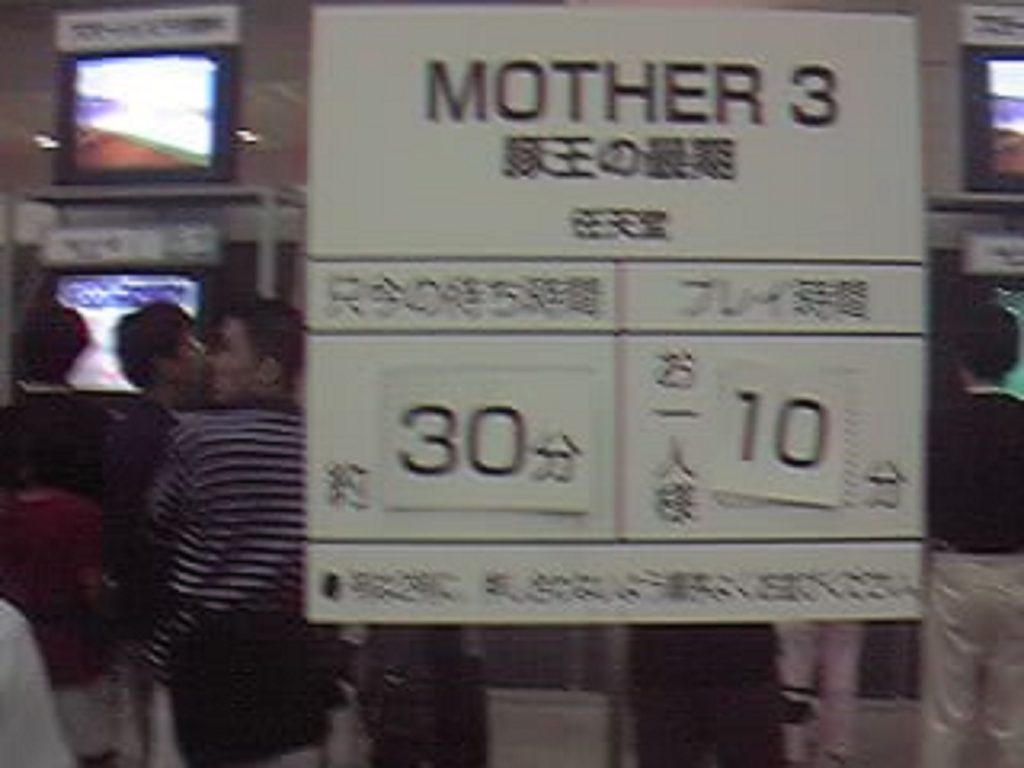
- August 21: Akihiko Miura is interviewed at Spaceworld. He reveals many details about the game, saying it “will make you cry”, and is about Lucas and Claus going on separate paths as they grow up. Some game mechanics are also spoken about, such as how the enemies’ battle music will fade in on the overworld in silent areas. He also hints that the 12-chapter structure might be subject to change.
- November 19: Itoi interviews Shigeru Miyamoto on 1101.com. He praises MOTHER 3 as being something entirely different from what they’d make in Kyoto, and estimates the game to be around 80% complete. He also commends the graphics for being on another level and unique from most games at the time.
2000
- Early 2000: The Pokémon Stadium team is brought on by Benimaru Itoh to assist development, improving both the visuals and performance.
- March: Itoi is interviewed in 64 Dream, and claims he’s currently reviewing the game chapter by chapter. He states Chapters 1 and 2 are complete, with the ending having been finished last Spring. However, Itoi considers the possibility that the game might not come out, but reaffirms he will continue working on it no matter what. He states while there are 5 main characters, Lucas incidentally became the primary protagonist. He also describes the ending as an empty white void that’s beyond tears, and will leave the player shocked.
- August 22: MOTHER 3 is cancelled due to the upcoming release of the GameCube and the need to move resources over to support the console’s launch. While development was progressing fine, Iwata insisted they could not spend more time on it in the current climate. They spent much time downsizing the vision, cutting 12 chapters to 9. While they considered moving development to the GameCube, they stated it would not solve all the issues they had. The Game Boy Advance was also mentioned by Miyamoto, but Iwata vocalizes that a GBA game would take just as much time as an N64 title. A novel or stageplay was also considered by Itoi himself, but he resolves the story could only work as a game. In tribute, many screenshots and a couple of music tracks are released from the final prototype. The developers questioned the state of the game, ranging from 30-60%, but Iwata shrugged these estimates off. According to him, the foundation was completed and only another year or so of finishing the remaining programming and polish was needed to complete the project.
- Lucas was set to debut in Super Smash Bros. Melee and was going to replace Ness if Mother 3 had been released before Melee. However, due to the problems that resulted in MOTHER 3 being cancelled indefinitely, Ness was kept in Melee before development ended.
- November: Shogo Sakai hosts a secret Mother 3 chamber concert for key members of the development staff, as a final sendoff to the project. This was his first time conducting an orchestra.
- December 4: Itoi appears on a livestream with Yomiuri News Stream HP. He says the team felt their work was wasted, and denounces the possibility of making Mother 3 for the GBA, feeling it wasn’t the right choice to help realize his ambitions.
2001-2002
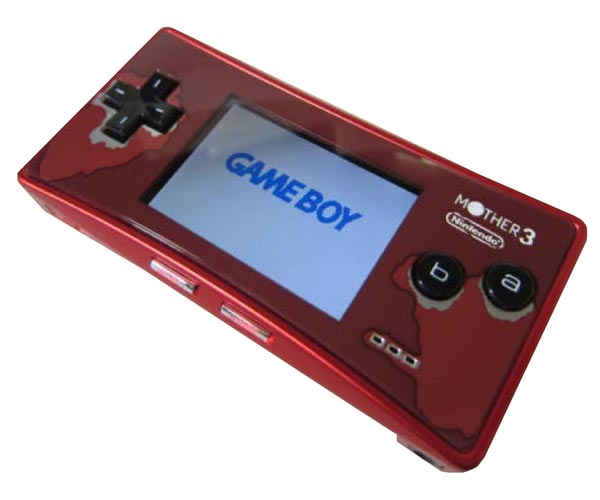
- 2001/02: Itoi goes out for lunch with Miyamoto and Iwata. Upon entering the taxi, Miyamoto broke the question if Itoi would be alright with developing MOTHER 3 for the GBA. Itoi wasn’t against it, and Miyamoto convinced him by saying “We could pull it off through pixel art, if you’re okay with that!” Itoi then decided to revisit HAL regarding the idea.
- August 27, 2002: Benimaru Itoh appears onstage at a Super Smash Bros. Melee concert, and hints that MOTHER 3 news will be coming soon.
- Late 2002: Brownie Brown is chosen to develop MOTHER 3 for the GBA. When Itoi first met the team at Brownie Brown, he informed them of the game’s storyline by recounting it off the top of his head. Along the way, he improvised many new details that weren’t present in the N64 version.
- Late 2002: All development materials from the N64 version were provided by HAL to Brownie Brown, including the last prototype build which was used as reference and inspiration.
Page Contributors
The Cutting Room Floor – Created the Original Pages on their Website
Kody NOKOLO – Edited Information for Mother Forever
The Cutting Room Floor Copyright License
Find any errors or want to contribute? Let us know in our Discord!



